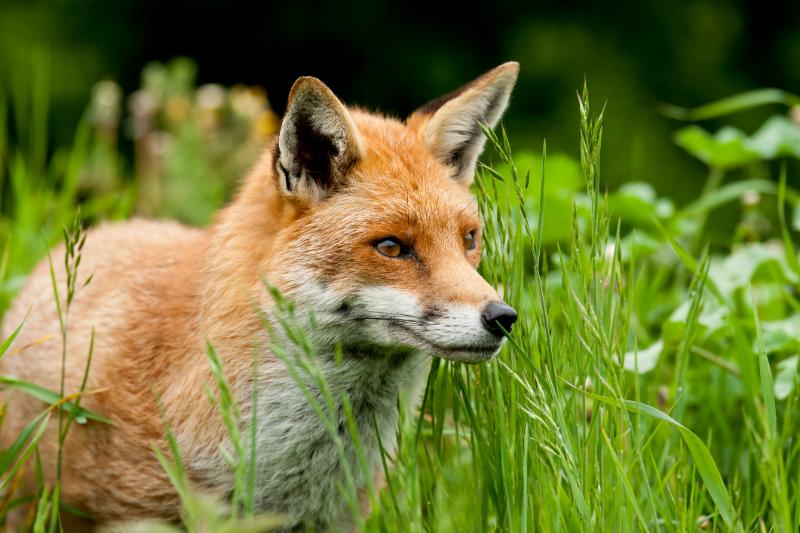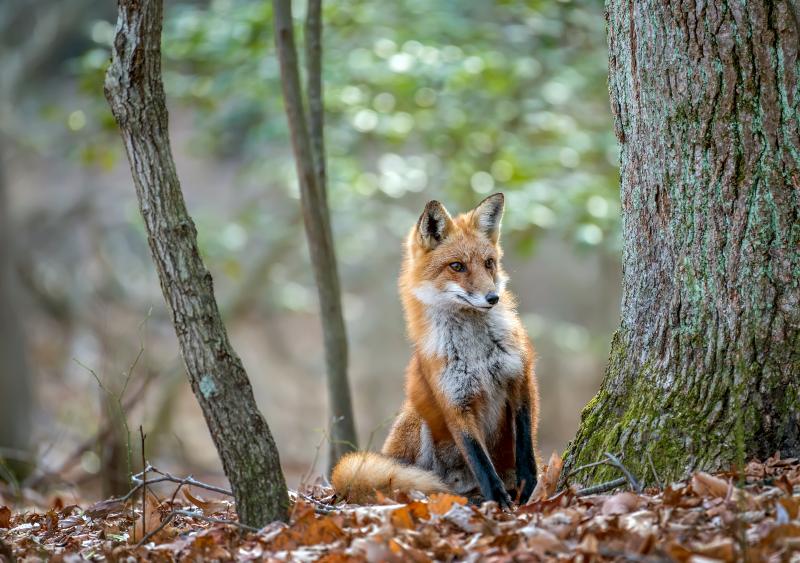
 WildlifeNYC311
WildlifeNYC311 Search all NYC.gov websites
Search all NYC.gov websites
Red Foxes
Red Fox (Vulpes vulpes)

Introduction
In a place as big and diverse as New York City, it doesn’t matter how eye-catching your outer appearance is—you can still blend in. That’s what makes it such an appealing place for red foxes (Vulpes vulpes). Their striking red coat betrays their general preference for avoiding attention. And when it comes to staying out of the limelight, few urban mammals have been better at it here in NYC.
Though their wariness can make them hard to spot, they do call the city home. Their history in the area dates back to pre-colonial New York. Red foxes prefer open areas with only sparse forest cover. As a result, they have been able to easily adapt to human development. The clearing of dense forests in New York State over the years for logging and farming has created more suitable habitat for them. In NYC, red foxes predominantly reside in the Bronx and on Staten Island. They’re often found in large parks, golf courses, and natural areas. Open, overgrown lots can provide good areas for their dens as well.

Background
Red fox populations can be found in many areas of the northern United States. In New York, fox bones have been found at the archaeological sites of some native tribes. This indicates that they have been native to the area for a long time. Some red foxes may have also been brought to the area from Europe by early settlers to establish populations for hunting.
In the 1940s, several New York counties put bounties on foxes. They were viewed at the time as threats to local livestock. However, their large litter size, high dispersal rate, and adaptability have made limiting their populations difficult. Their adaptability includes the ability to shift their diets based on what foods are locally available. In areas where resources are scarce, they can travel up to 5 miles a day in search of prey. Within NYC they have few natural predators, with the possible exception of coyotes in some areas.
Appearance
True to their name, red foxes have a year-round reddish-orange coat. Their fur tends to be brighter in the winter. The red portion of their coat covers the top of their face, head, shoulders, and back. Their legs are generally covered in mostly black fur. Their tails and ears often feature some black as well. The underside of their face, throat, and chest are typically white.
Red foxes are smaller than coyotes and medium-sized dogs. They usually measure between three and four feet long. Their long, bushy, white-tipped tails can account for almost half of their length. Red foxes can weigh between 8 and 17 pounds. Males tend to be slightly larger than females.
Behavior
Red foxes are mostly nocturnal. However, they can be seen during the day, and are active at dusk and dawn. Foraging during the day can become frequent if foxes have pups they need to feed. They adapt their diets based on what is seasonally available at different times of the year. Foxes will prey on small mammals including squirrels, mice, rats, and rabbits. They will also prey on ground-nesting birds and their eggs. Reptiles, amphibians, invertebrates, carrion, nuts, seeds, fruits, and unsecured trash are also parts of their diets.
Peak breeding season occurs between January and February. However, it can run from December all the way to April in New York. After a gestation period of 52 days, foxes will give birth to between three and six pups. In some cases litters can be as large as 12 pups. Though some males are polygamous, foxes can mate for life. Males and females both assist in raising pups. After 12 weeks, fox pups are weaned and capable of hunting on their own. In late summer and early autumn, pups will begin dispersing to find their own territories. They are more visible during this time as they venture out.
Red foxes will actively defend their territories from other foxes by chasing and harassing intruders. They will often scent-mark their territories with urine and feces. Foxes den in burrows. They will usually move into and widen burrows previously created by other small mammals like groundhogs or skunks. Dens can have multiple entrances. They are mostly used for raising pups, storing food, and for shelter during wet weather.

Fast Facts
- Red foxes often prefer to rest and sleep outside their dens. They can sometimes be spotted napping in open fields or on hills with good visibility.
- Their sense of hearing is so sharp that they can hear and locate rodents moving beneath the snow.
- Red foxes can run up to 26 mph in short bursts.
- Mates will communicate with one another over long distances using yips, barks, and other sounds.
Coexistence Tips
- Do not feed red foxes. Please help keep red foxes wild. Feeding foxes can cause them to lose their natural hunting instincts and cause them to associate humans with food.
- Observe and appreciate red foxes from a distance. Though they may look similar to dogs, red foxes are wild animals. The best way to ensure both your safety and the safety of the fox is to keep your distance.
- Store all food, and garbage in animal-proof containers. Red foxes are curious and resourceful. They can find ways into unsecured trash bins and pet food containers.
- Protect your pets. Red foxes can carry rabies, canine distemper, and mange. Walk dogs on a leash and keep cats inside for safety. Also make sure your pets’ vaccinations are up-to-date. It’s the law.
- Keep red foxes wary. If you are approached, make yourself look bigger by putting your arms up. Make loud noises until the fox retreats. Appreciate foxes from a distance.
Cornell University Department of Natural Resources (1982). New York's Wildlife Resources: Red Fox.
SUNY College of Environmental Science. Red Fox.
Department of Environmental Conservation. Red Fox.


